Wedding photography has the honor of capturing one of the most important days in someone’s life. Wedding photographers specialize in that craft exclusively because of how much time, dedication, and skill wedding photography requires. But there are universal tips and tricks to make stepping into this romantic endeavor much easier.
Here is our list of 40 tips for wedding photographers, divided by topic!
Equipment and Settings
1. Set the Camera to Burst Mode, Single Point Focus, and Continuous Autofocus
Your camera out of the box will not be in Burst Mode or High-Speed Continuous Shooting. Burst Mode is when the camera takes multiple photographs while holding the shutter button. This takes advantage of the camera’s Frames-Per-Second, which is how many images the camera can take every second. This is excellent for wedding photography because you can capture every single moment!
Next, you want to use Single Point Focus. By default, your camera focus points will be set to Area Autofocus. That isn’t very reliable because you’re letting the camera make the focusing decisions. You want to remove all potential errors with moments being so instrumental during weddings. Single Point (or Spot in some brands) means that the camera will focus on whatever area you tell it to. All you have to do is line up the little black square that appears in your viewfinder over the subject you want to focus on.
Your camera is set to One-Shot right out of the box. This is not good for wedding photography because you never take just a single image. You must switch your camera to Continuous Autofocus (AI Servo in Canon, AF-C in Nikon, Continuous AI in Sony, etc.). Continuous autofocus is when the camera’s focus keeps refocusing on the subject as it moves.
Even though these three settings tend to be used only for action photography, wedding photography also features a lot of movement. These settings ensure you don’t miss key moments – because you cannot get them back!
2. Set to Matrix / Evaluative Metering For Difficult Lighting and Spot Metering for Everything Else
Metering tells the camera sensors the right exposure for that scene. The exposure meter can tell if your settings are very off or right!
When setting the exposure, Matrix / Evaluative meters consider the entire scene, all of its shadows and highlights. Its goal is to expose the darkest part of your image and the lightest part of your image as equally as possible. This is great for church weddings or those taking place in difficult lighting situations!
However, if your lighting is great, capturing the bride and groom in perfect exposure is the most important thing. For this, it’s better to switch to Spot Metering. Spot metering is where you tell the camera what spot you want to expose. All you do is point the camera at the object or subject you want to capture exposure for, and that’s it!
3. Shoot in RAW Format
As much as JPEG format is economical and friendly to memory cards, weddings shouldn’t be shot in JPEG format. Due to weddings only happening once (or you would hope!), there is little room for mistakes. Luckily, if a mistake does happen, you can likely fix it in editing if you capture the shot in RAW format.
RAW format is intended for those that edit and manipulate photographs, as the fullest details and the lack of file alteration allows significantly more control over large editing adjustments such as overblown highlights or an underexposed image. This is because you can, in most situations, recover information in the image that would otherwise be lost if it is compressed.
4. Fixed Lenses for Portraits, Variable Lenses for Everything Else
Lenses come in variable focal lengths (lenses that can zoom) and fixed focal lengths (lenses that cannot zoom). Both have their advantages over the other!
Fixed lenses are perfectly built for their exact focal length. As such, these lenses tend to be exponentially sharper than lenses that zoom! This also allows the lens engineers to focus on other key features (such as aperture) rather than ensuring the zooming barrel works well. These lenses exceed all expectations when shooting portraits and detail shots.

Zoom lenses offer a lot of adaptability due to being able to adjust the frame by simply zooming in and out, preventing you from needing to move physically. These lenses can change their focal length in a split second, allowing you to capture spontaneous moments. These lenses are great for capturing candid moments and ceremony shots because you can adapt to anything that happens (even the unexpected)!
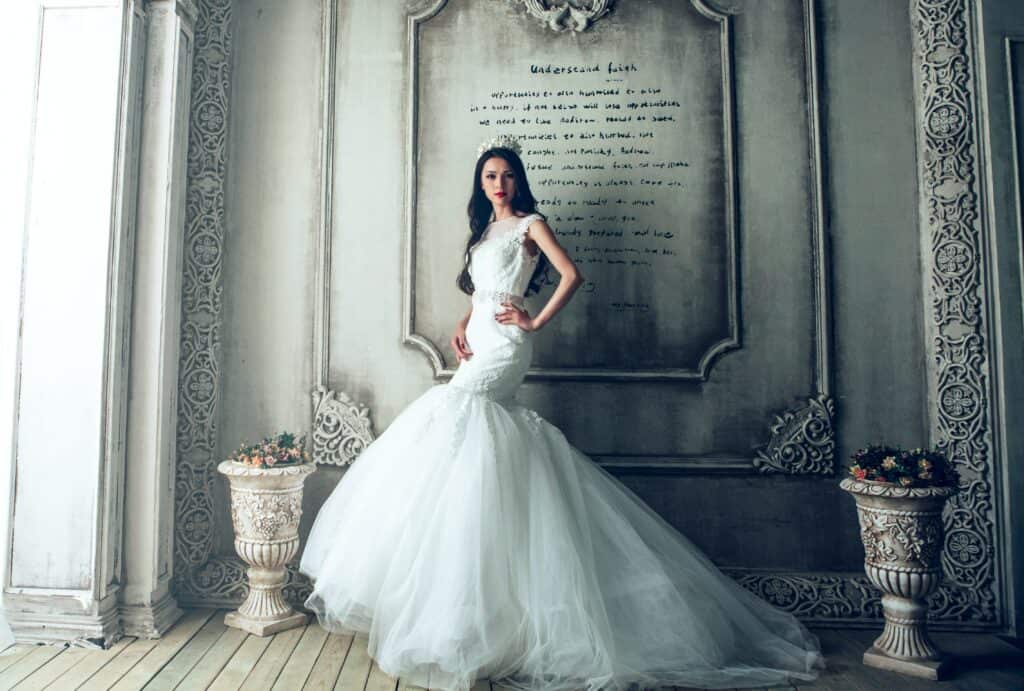
5. Use Shallow Depth of Field for Details, Deep Depth of Field for Portraits
Depth of field refers to how much of an image is in focus. A shallow depth of field means that a single point is in focus, and the rest blurs away, while a deep depth of field means that more of the frame is in focus. Both are excellent for their respective purposes!

Shallow depth of field is great for detail shots because these images force the viewer to direct their interest to the subject in-focus.
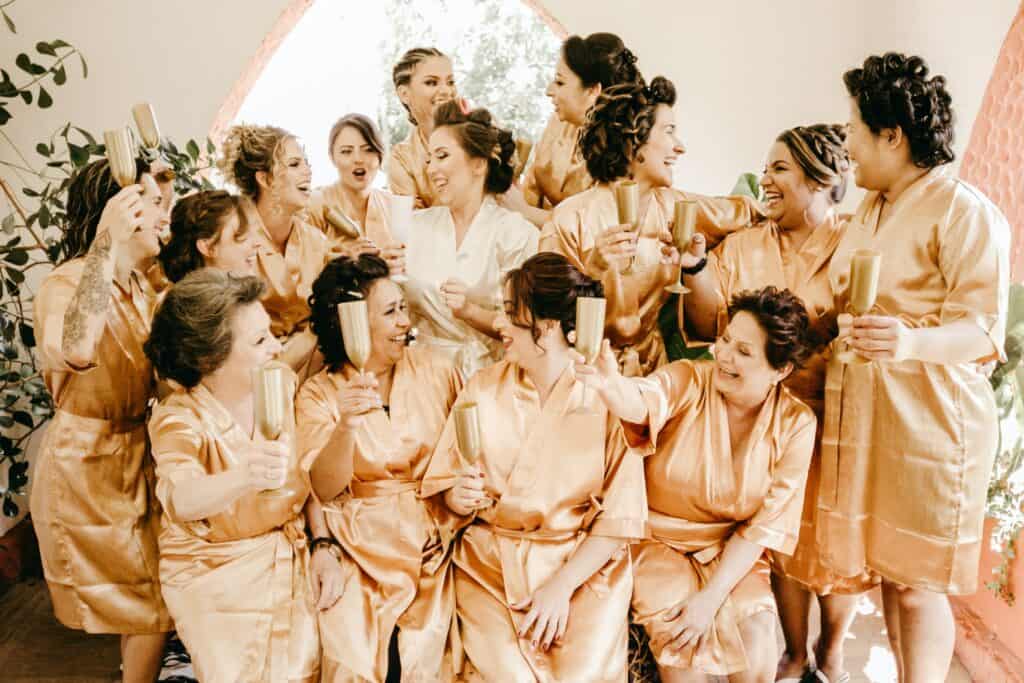
Deep depth of field is excellent for portraits, especially group portraits because you want everyone’s smiling face in focus and not blurry!
6. Use Two Camera Bodies
Using two camera bodies will save you a tremendous amount of headaches.
You can have a different lens on each body and be able to quickly switch focal lengths without the hassle of swapping lenses (which can cause you to miss a key moment due to the time it takes to swap optics). With two camera bodies, you lift the one that you need.
Secondly, forbid one camera body breaks, dies, or is having difficulty – you have a backup immediately.
Carrying two cameras and lenses may sound like a hassle, but many solutions exist. Camera harnesses allow you to carry two pieces of equipment at your sides and take the weight off your shoulder and neck.
7. Always Have Back-Up Equipment
Always have backup equipment as well. Malfunctions plague all photographers at some point, and you don’t want the stress of that happening during a key moment. Carry extra memory cards, lenses, cameras, and flashes.
8. Shoot on Two Cards Simultaneously
Most new professional (and semi-professional) cameras have two card slots. These two card slots offer two options: simultaneous shooting and card-switch shooting.
Card-switching means that the camera automatically switches to record on the second card when one card is full. Although this sounds tempting because it allows you not to need to switch cards as frequently, this isn’t a good idea for weddings.
You want to switch to simultaneous shooting. This means that both cards record at the same time. This is the fool-proof way to prevent card malfunctions and save photographs!
9. Off-Camera Flash Will Save You
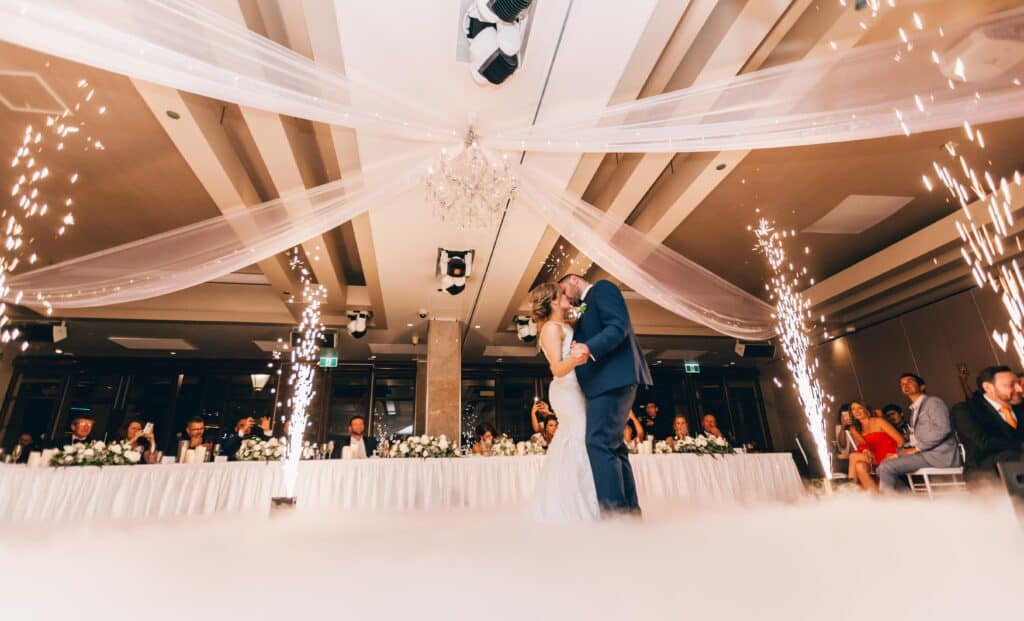
Good control of lighting separates the professional photographer from the amateur one. With wedding photography, you don’t usually have control over the locations and lighting present naturally – so using off-camera flash units can help regain some of that control.
Off-camera flash can be used as a fill light for shadows or to pop the subject during dimly lit receptions. Remember to be conscientious about its use so you don’t blind your subjects or interfere with the happenings.
10. Never Leave Equipment Unattended
This is a given, but many lapse when in the moment. Even if your couple is trustworthy, you do not know their guests, the staff hired, or other vendors. Never leave your equipment unattended. Theft does happen!
11. Switch to Silent Shooting Mode
You never want your photography to interfere with what is happening. Set the camera to Silent Shooting Mode so your shutter sounds aren’t the main event!
Shooting
12. Scout the Location if Able
Going in blind is never a good idea – if you can visit the venue beforehand! This gives you a great idea of how you’ll shoot, what equipment you need, and what suggestions to offer the couple. Don’t stress yourself out coming in unprepared.
If visiting the location in person isn’t possible, look at photographs of the venue online! Some venues even have a virtual tour you can take on their website or on their YouTube channels.
13. Have a Shot List
Simply put, a shot list is a detailed checklist of the images you must capture during a shoot. Using a shot list is very helpful for big and long events such as weddings!
This allows you to ensure that no moments that are important to the couple are missed and helps you organize the flow of events. If a wedding has two shooters, this even further organizes the planning and coordination.
A shot list has a secondary bonus of ensuring that the couple knows exactly what to expect from you and won’t toss something unplanned onto your back. A shot list can act as insurance for the photographer.
Thirdly, a shot list opens communication between the photographer and the client so that both can equally express their needs!
14. Don’t Forget the Details!

As much as capturing the beautiful couple and their happy guests is important, the details are too. Details are what the bride and groom will forget over time, and wedding photography is supposed to immortalize a momentous day.
Capture all of the small things. The beautiful table settings, the cake design, the flowers, the embroidery on the wedding dress, the gorgeous plates, and the wedding rings!
15. Capture the Reactions and Emotion
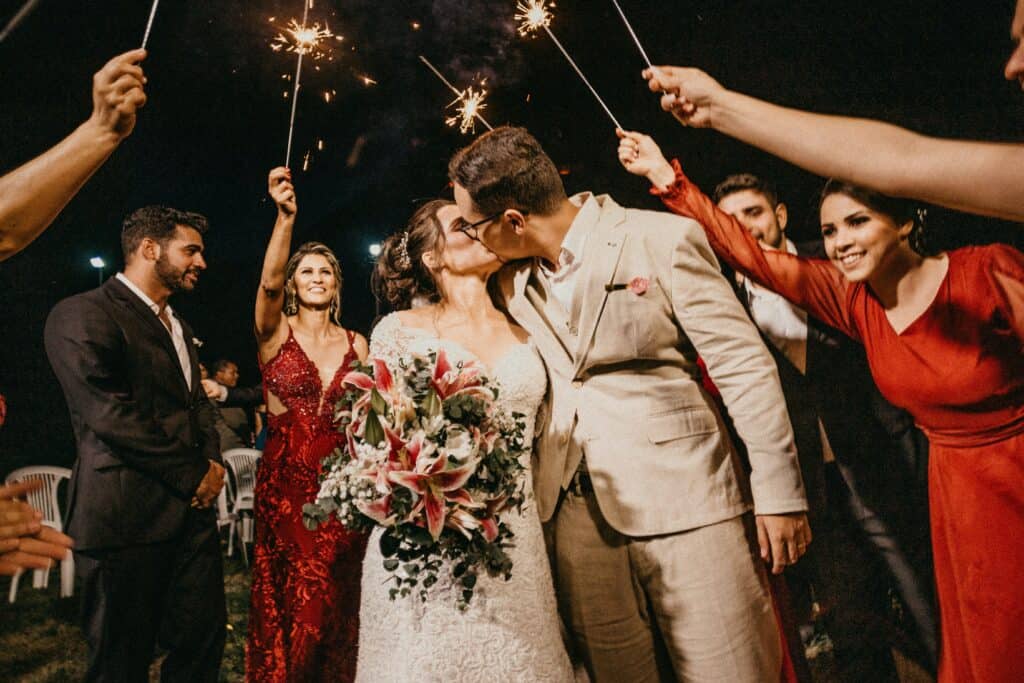
As humans, we best respond not to words but physical signs of emotion. This rings true in photography too. Images are stills and cannot move, so we add stories to them through expression. Making it a point to capture the happy reactions to the beautiful bride appearing for the first time, or the laughter of a funny speech, will speak volumes above anything else.
16. Schedule the Group Shots Ahead of Time
Group and family shots are the hardest to get when photographing a wedding. The group shots are also the ones that matter the most to many brides and grooms.
The difficulty tends to be finding all the scattered family members, so the best way to remedy this is to set a shooting schedule for all group shots. This allows the couple to relay the message to their family and friends and ensure everyone is ready at the designated time.
However, things don’t always go perfectly according to schedule, so have some buffer room if something goes overtime.
17. Be Creative with Composition
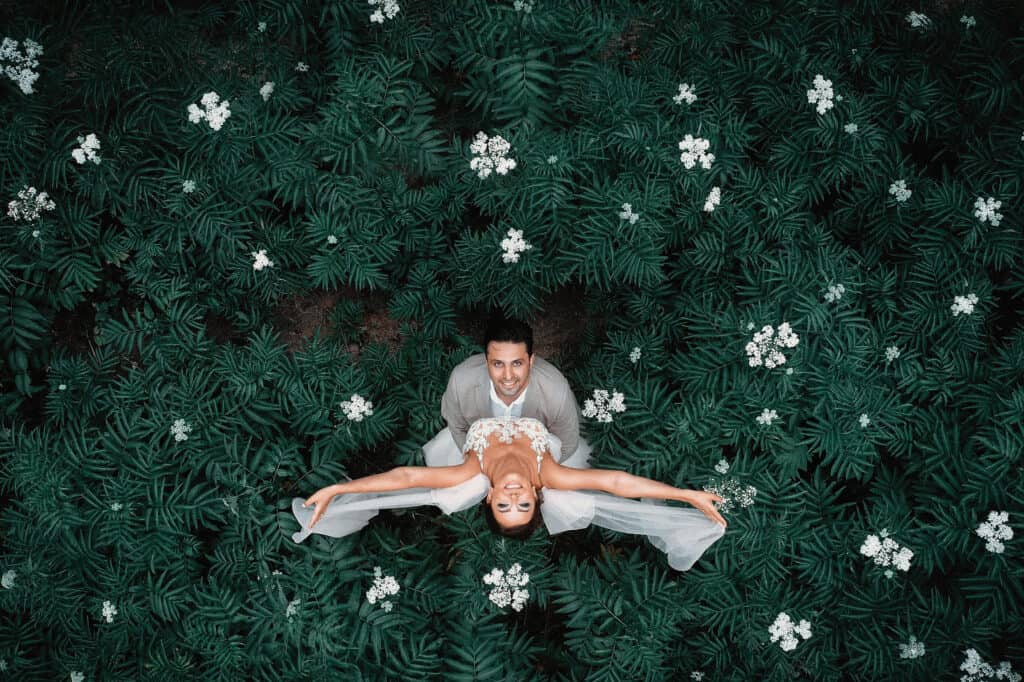
Every client wants something uniquely theirs. Likewise, every photographer wants something unique to stand out from the crowd. Combine these two needs together and get creative!
Composition is the best way to showcase one’s creativity. Composition is the arrangement of elements in relation to one another. Look at a scene and find new and unique ways to place your bride, groom, or bride and groom together.
Ensure that the angles are flattering to your couple and that your composition still adheres to basic rules. Such as the rule of thirds or having more negative space in the implied sense of movement.
18. Ensure the Photographs Fit Your Portfolio Quality
The only basis your couple has on what you can deliver is based upon your photography portfolio. Make sure that the photographs you take match or exceed the quality of your portfolio. The last thing you need is a disappointed bride.
Depending on where you live, you may be obligated to issue a refund by legal matters if your product doesn’t match the quality standards you set in your portfolio.
19. Be Prepared Ahead of Time for Poor Weather or Dimly Lit Venues
Problems happen – and special days are no exception! If you’re capturing an outdoor wedding, be ready for the possibility of poor weather, no matter how slim the chance. Have a rain cover for your equipment in the car or a cooling pad for hot summer days.
Equally, sometimes the wedding venues don’t actually have the lighting they advertised. Be ready with wide aperture lenses, low light cameras, and artificial lighting (such as off-camera flash).
20. Pose Your Clients for Portraits

Although we all love beautiful candid shots, you still want to ensure you have confidently excellent shots for safety. This requires posing your couple and their party for the portraits! Adhere to portrait-posing rules, even when capturing newlywed shots.
21. Use Hands for Emotional Connections

Having the people in the images connect with one another with hands (such as hugging, resting a hand on a shoulder, or holding hands) shows an emotional connection in a picture.
22. Be Very Fast with Shooting – Get In The Aisle and then Quickly Move Out of the Way
Oftentimes, the best angles are the most obtrusive ones. Such as the couple walking down the aisle. You must capture your shots, but the wedding must be enjoyable for the guests and couple.
So the happy medium is to be quick with it! Hop into the position you need for a shot or two, then quickly hop out before it becomes obnoxious and disruptive.
23. It’s Okay to Fix in Post Processing
Mistakes happen, and that’s okay. It’s perfectly alright to rely on post-processing to fix certain things that were otherwise out of your control (and never be ashamed to do that). Get a good grasp of photo editing software, such as Adobe Photoshop and Adobe Lightroom.
Post-Wedding
24. Figure Out Your Style
Having a distinct shooting style will aid you with wedding photography. This is because clients will know what to expect their final images to look like (and you never want to promise something you cannot do).
Having a style also aids in speeding up your editing because you can create custom presets and batch-process images!
Some of the common wedding photography styles include:
Light and Airy
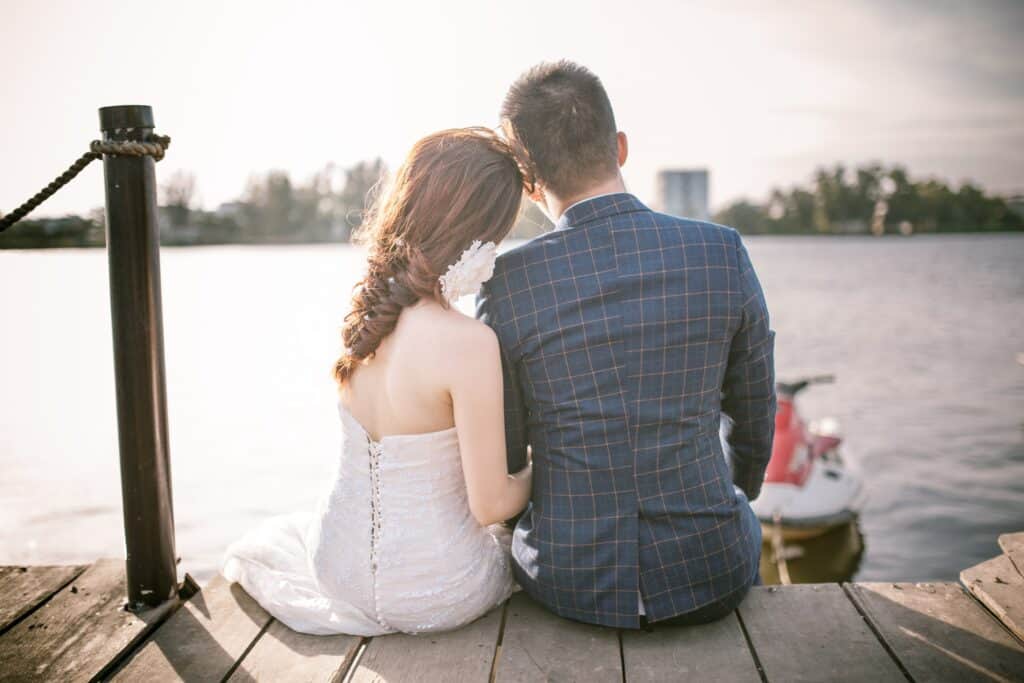
Rich Tones
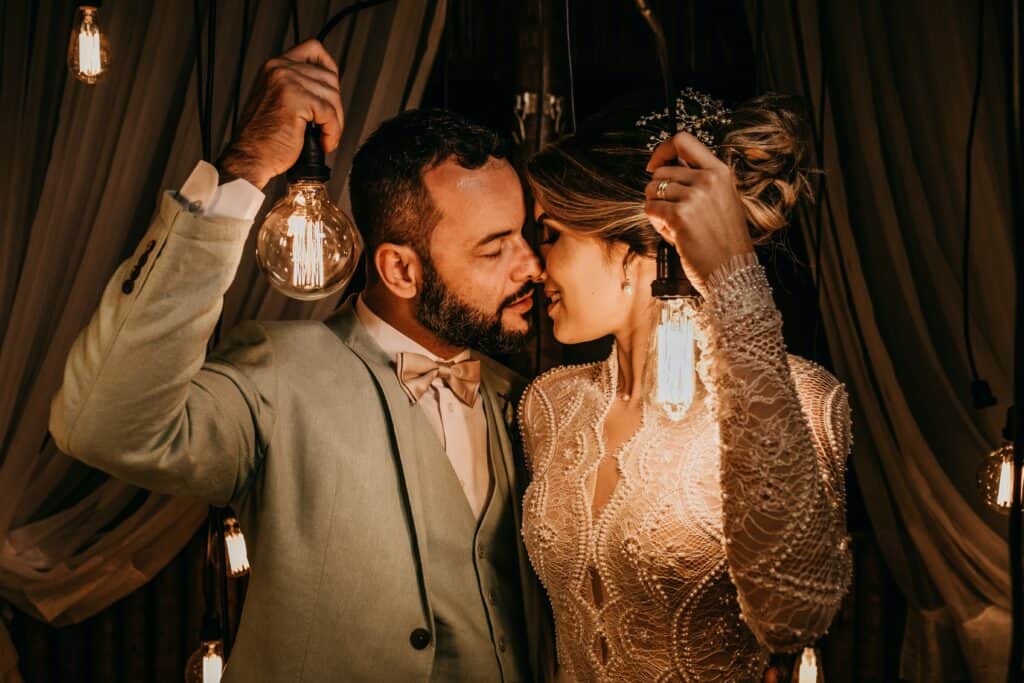
Earthy
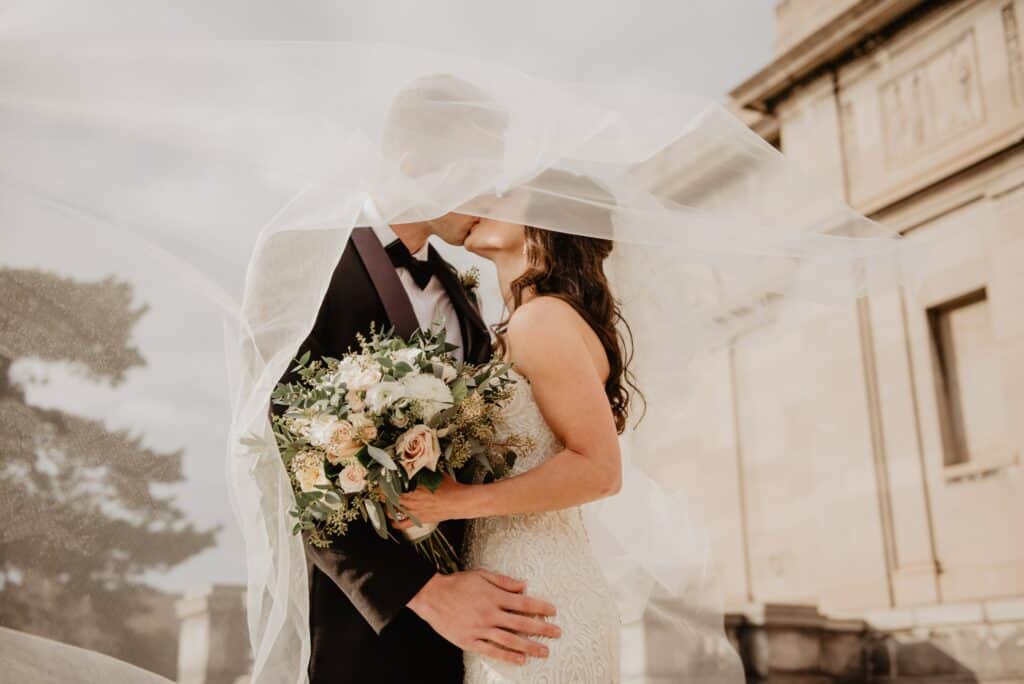
Dark and Moody

25. Use Proofing Galleries
Proofing galleries are websites where the client can see your photographs and then pick out the ones they love the best!
This significantly simplifies the editing process and saves you a tremendous amount of time.
After the wedding, batch process some color correction on the images and then upload all of them to a proofing gallery, ideally divided by topic (Ceremony, Newlywed Portraits, Reception, Cake Cutting, etc.).
The client can select the images they love the most, and you will edit those shots. Easy!
26. Have a Good Workflow
Having a good and consistent workflow helps finish images in record time. Find a process that works the best for you and stick to it!
Here is a sample workflow to get the gist:
- Plug the card into the computer and transfer it to the desktop.
- Copy images to an external hard drive for backup.
- Load images into Lightroom.
- Organize images by topic.
- Color-correct images.
- Export images in low-resolution settings.
- Upload to the proofing gallery.
- Send to the client.
- Receive selection list from client.
- Sync Lightroom catalog with selections.
- Edit images.
- Deliver via mailed USB drive.
27. Outsource Some Editing
During the wedding season, it is easy to get overwhelmed by the amount of work, especially if you are capturing a wedding every weekend.
It’s okay (and NOT embarrassing) to outsource your editing work to a third-party company to ensure you meet all deadlines for image delivery! Many companies specialize in this service.
The Client Process
28. Create a Questionnaire
To minimize miscommunication, create a questionnaire the couple can complete when contacting you. This helps organize all the information, lets you determine their wants and needs, quote an appropriate cost, and opens the door for easy communication between yourself and the clients.
Some questions to throw into the questionnaire include:
- What date is the wedding taking place?
- Where is the ceremony?
- Is the reception in the same venue or elsewhere?
- How many guests?
- How many in the wedding party?
- How many hours of photography coverage?
And many more.
29. Throw in a Gift, Like a Complimentary Engagement Session
Incentivizing hiring you over another photographer is key to running a profitable business. Offering a complimentary engagement session is a great idea! This also allows you the time to get to know your couple and how they are in front of the camera before capturing their wedding day.
If you don’t want to do that, or the couple already had engagement photographs done, why not offer some complimentary prints?
30. Set Reasonable Expectations and Timelines
The biggest cause for conflict is miscommunication with expectations and timelines. Your couple must understand what you will deliver, when you will deliver it, and how the process works. Any error in proper explanation can end in disaster.
Write everything down and have actual conversations with your couple! Then everyone is happy!
31. Use a Contract
Like any business or profession, being a photographer requires legal knowledge to protect yourself and your clients. The first begins with a solid contract.
Contrary to popular belief, a contract is not a ‘free pass’ for a photographer – it actually protects the client just as much. A contract outlines all of the expectations, timelines, and ensures that the photographer meets their guarantee. Likewise, the contract prevents the client from taking advantage of the photographer.
Not using a contract is like holding a loaded gun with the safety off. Don’t take that chance. As much as we love to believe everyone is honest, that is not always the case.
All of this being said, don’t try to draft a contract yourself. It is likely to be riddled with loopholes or illegal terms and, even worse, likely to be entirely void. Hire a contract lawyer who is versed in photography law.
32. Make Sure the Bride and Groom are the Contract Signers
Things can get tricky if someone else signs the contract on behalf of the bride and groom, such as the mother-in-law. Make sure only the bride and groom sign. They are your clients, your decision-makers, and it’s their special day.
Relatives may want the best for them, but things can get messy if someone else signs the contract and becomes the decision maker above the bride and groom. Whoever signs the paper is the one who gets the final say.
33. Use Social Media Marketing to Find Your Clients
Social media is an excellent and cost-effective way to market your photography business! From launching ads on Facebook and Instagram to making viral posts, utilize this expansive platform to your advantage.
Social media also has the bonus of everyone sharing their life stories, such as engagements – a great opportunity to send congratulations and a reminder that you are a wedding photographer.
34. Have Liability Insurance
Liability insurance protects you from any situation in which you may be liable, such as injury or a corrupted card. Have this in place before becoming a wedding photographer!
Many wedding venues won’t allow a photographer without liability insurance to even set foot inside the venue, let alone shoot in it.
Liability insurance policies are not very expensive, less expensive than the average insurance policies.
35. Have Full Galleries Available for Clients To Look At
Clients love to know beforehand what to expect from you and your work. Having full galleries available for clients to look at and use as a frame of reference is a great way to build trust, set expectations, and ensure everyone is happy.
Other Tips
36. Always Show Up Early
As many professionals say, “If you’re on time – you’re late.” Always show up early. You never know what obstacles may present your way, and arriving at the venue or home early ensures that you have the time to deal with any circumstance that may arise.
It is suggested to arrive at least 30 minutes before you are set to shoot, but an hour early is the most confident answer.
37. If You’ve Never Shot a Wedding Before, Work Under a Professional
Don’t go into shooting weddings blind – this is a recipe for disaster. It is good to be mentored by an established wedding photographer, assist a professional photographer, or second shoot a wedding with a professional photographer. This will give you the know-how right away!
38. You Can Specialize in Elopements if Large Weddings are Too Stressful
Shooting large weddings isn’t for everyone! Likewise, having a large traditional wedding isn’t for everyone either. You can specialize in elopements, courthouse weddings, or intimate weddings instead.
This has become very trendy in recent times, both for photographers and for the couples they are photographing. So much so that a whole new niche has arisen in recent years: destination photographers! Destination photographers capture elopements at the world’s most beautiful spots, such as under an Icelandic waterfall.
39. Look at Other Photographer’s Wedding Shots for Inspiration
It’s a good idea to browse other photographers’ work for inspiration and motivation for your own. This is a great way to get inspired, find new ideas, and learn how to use your equipment better.
40. Don’t Feel Discouraged
Capturing weddings is no simple task, and getting discouraged is easy. Don’t let negative feedback or the work of other photographers discourage you. Turn that negative into a learning opportunity that helps improve future work.
Conclusion
These tips should aid you in preparing for your next wedding shoot! Remember to use the right settings, have backups, capture the most special moments, and give your client the memories they want.

